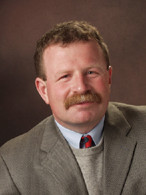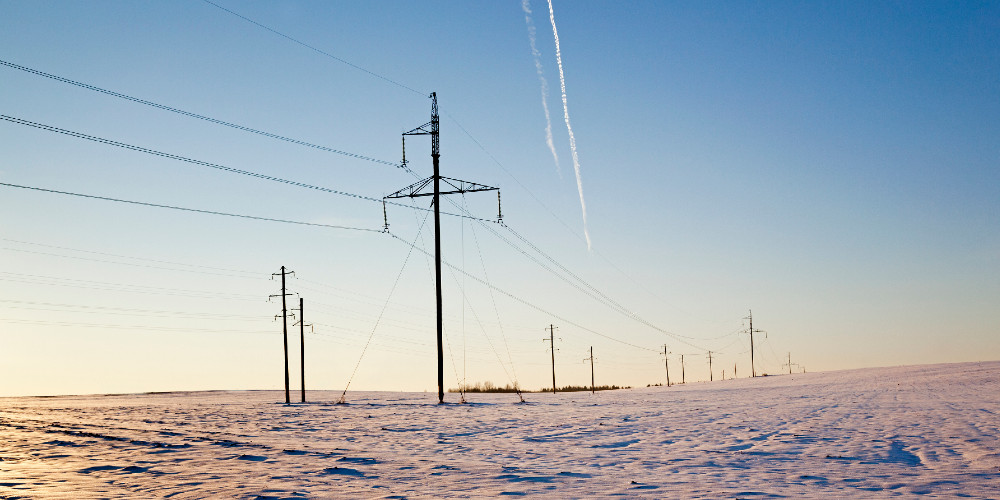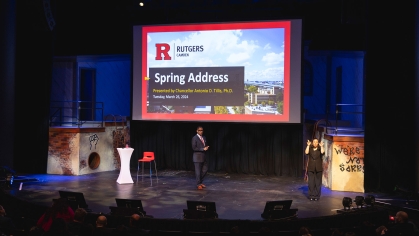Electricity Providers Must Plan for Power Demand Surges During Extreme Weather Conditions, Says New Research
Electricity providers have a longstanding strategy to meet the demand for power in 90-plus degree hot summer days, when people turn on air conditioners to get relief from the heat.
Two Rutgers University‒Camden researchers say the focus should also include a plan during extreme winter weather conditions, such as last month’s storms in Texas.
Richard Michelfelder and Eugene Pilotte, finance scholars at the Rutgers School of Business–Camden, say there is an urgent need to plan for punishing cold weather that can cause electricity consumption spikes and power failures.

Richard Michelfelder
Michelfelder, an expert in electric, gas, and water public utility economics and finance, as well as renewable energy, became interested in studying how electricity providers handle extreme weather conditions after the January 2014 polar vortex slammed much of the Northeast with intense cold and windy conditions, resulting in power outages, a surge in electricity demand, and rolling brownouts.
In an analysis of the PJM Interconnection – the power grid that covers all of Pennsylvania and New Jersey, parts of 11 other states, and Washington, D.C. – Michelfelder and Pilotte found that during the winter polar vortex, PJM had its highest price spike in history, and a shortage of needed power.
The Rutgers‒Camden scholars found that the market production cost curve had its steepest slope during the winter seasonal peaks, while the PJM capacity planning focused only on summer peak electric use.
The authors say PJM learned a valuable lesson from the polar vortex incident. The organization extended its peak capacity plans to include a winter weather preparations initiative.
Michelfelder, a meteorology enthusiast and a clinical associate professor of finance at Rutgers–Camden, says electricity demands in extreme winter weather are a greater concern than summer peak periods due to global warming and climate change, which cause tremendous drops in winter temperatures as the melting of the Arctic ice cap and warming Arctic water are a major cause of growing instability of the North Pole’s polar vortex.
When Texas experienced storms and unusually low temperatures in February, some residents received electric bills as high as $17,000. The state’s electric grid underestimated how much power it would need, and the state’s public utility commission, which regulates rates, allowed the grid to raise the ceiling on energy prices.
Texas allows customers to pick their utility providers, with some offering plans that allow users to pay wholesale prices for power. In better weather, variable plans may be lower than fixed-rate plans. When the wholesale price rises, customers will pay higher prices.
Unlike most states, Texas does not have shared high-voltage connections with neighboring states to help supply electricity to customers. The wholesale price of electricity spiked more than 10,000%, resulting in Texas residents receiving extraordinarily high bills.
Michelfelder says customers can avoid getting extremely high electric bills during unusually bad weather by choosing the local electric utility to provide power to their homes.

Eugene Pilotte
“Utility power rates somewhat insulate customers from spot market price spikes, whereas power marketers have clauses in their sales contracts to protect themselves from price spikes,” says Michelfelder.
He says another option for customers is to install a natural gas-fired generator to generate power. The Rutgers‒Camden researchers say home solar electricity generation systems can be useful, but they work best in the summer because they operate efficiently on sunny summer days, but not as well in the winter, when snow or clouds cover the panels.
Michelfelder’s and Pilotte’s research is available in “The Electricity Production Cost Curve, During Extreme Winter Weather,” a paper submitted to the Journal of Economics and Business. ---



